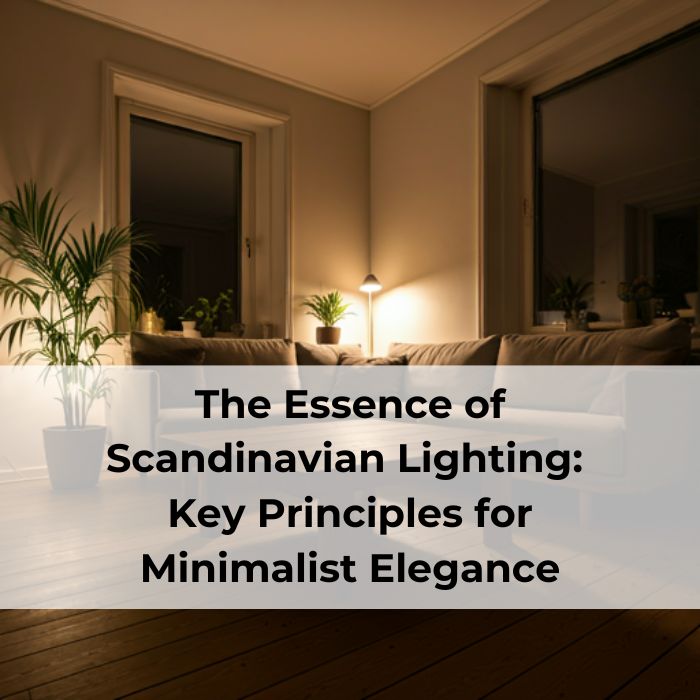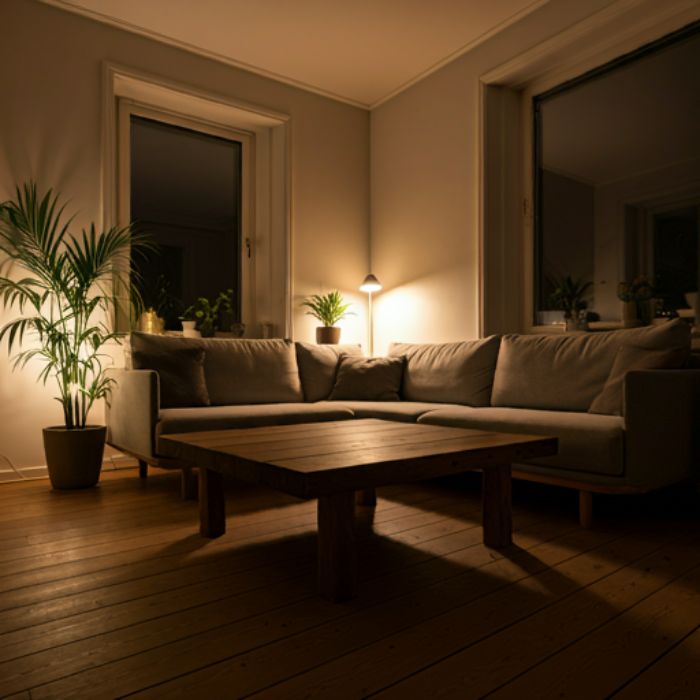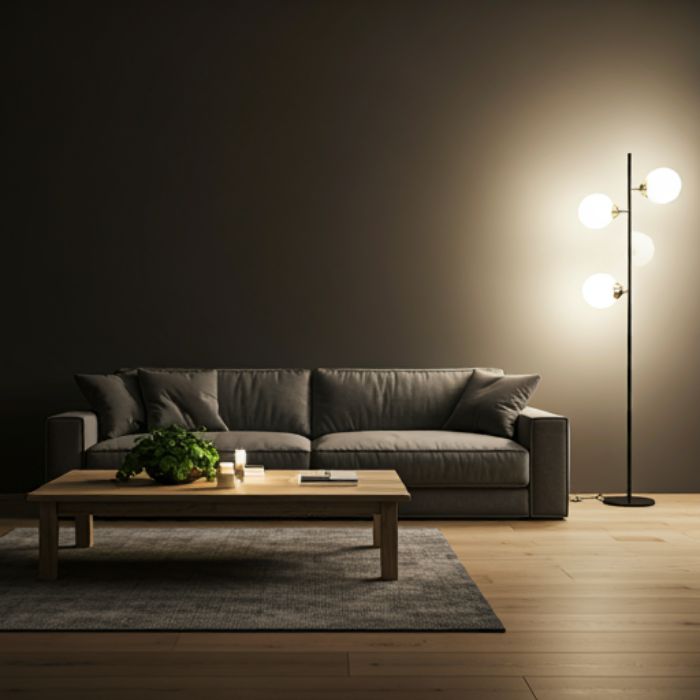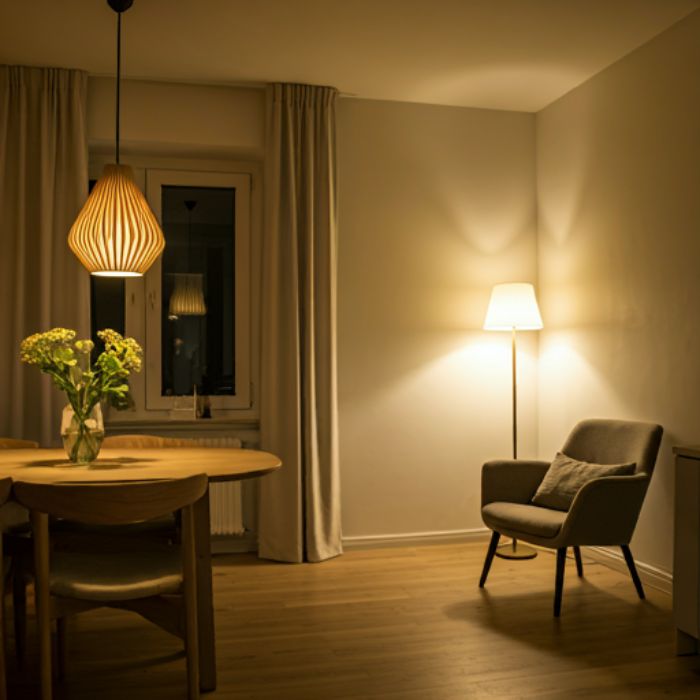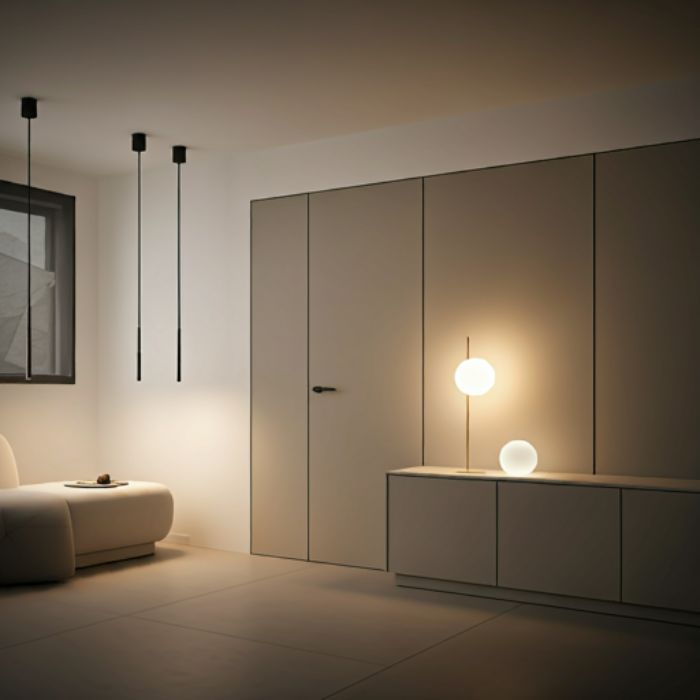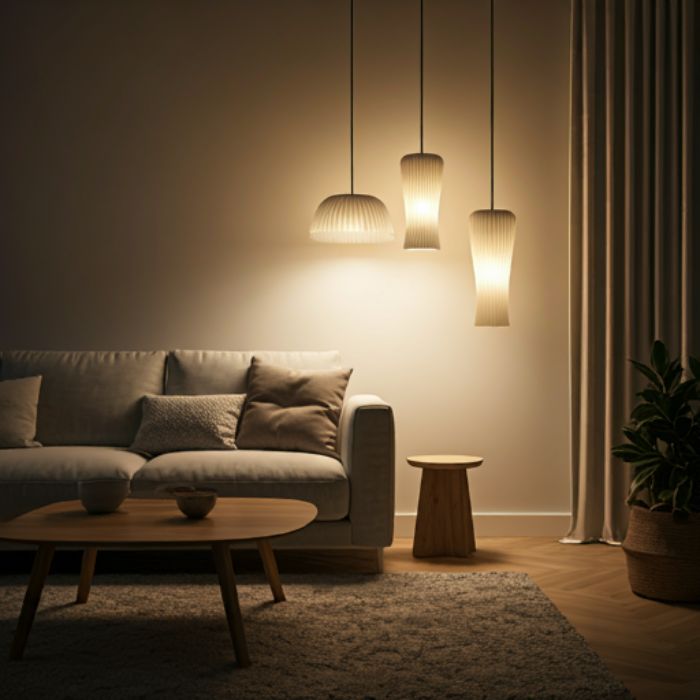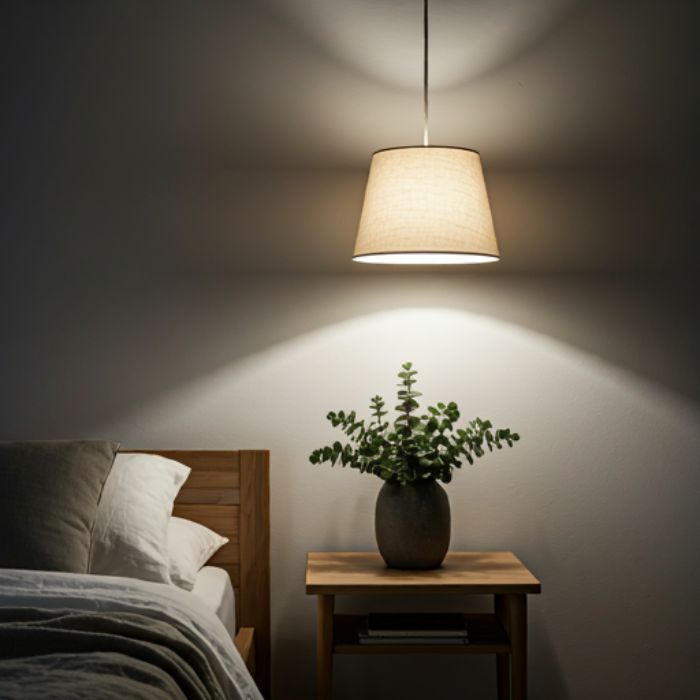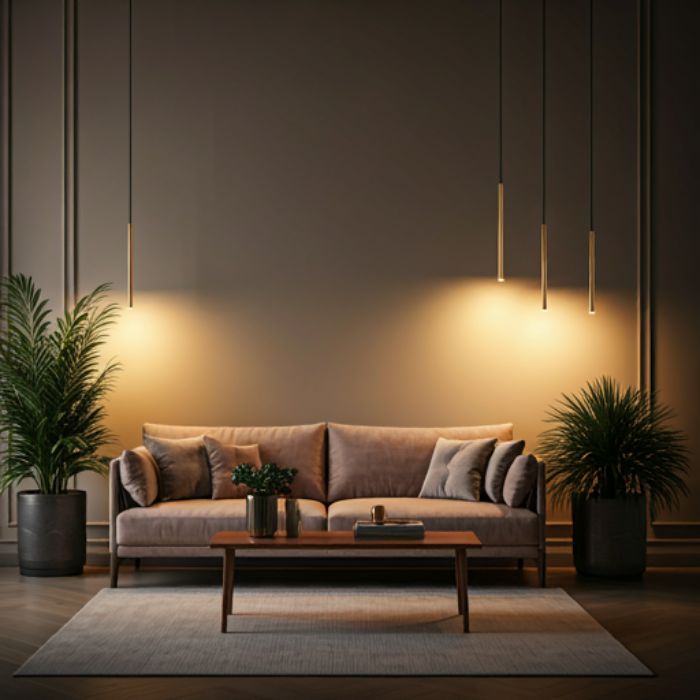Introduction
Scandinavian design has long been celebrated for its ability to combine functionality and beauty seamlessly. This design philosophy shines brightest in minimalist lighting, where the focus is on creating cozy and warm spaces with simple yet effective fixtures. The principles of Nordic lighting are rooted in practicality and elegance, emphasizing the importance of soft, natural lighting to enhance living spaces.
By understanding the core lighting principles of Scandinavian design, you can transform your home into a haven of minimalist elegance. From natural lighting to ambient lighting strategies, this guide will walk you through how to embrace Scandi decor and its timeless charm.
Origins of Scandinavian Lighting
The origins of Nordic lighting are deeply influenced by the geography of Scandinavia. With long, harsh winters and limited daylight, Scandinavian homes required innovative lighting solutions to stay bright and inviting. This need gave rise to lighting styles that emphasized functionality while mimicking the warmth and softness of natural lighting.
Over time, these principles evolved into an integral part of Scandinavian design, celebrated globally for its blend of practicality and aesthetics. Today, minimalist lighting inspired by Nordic traditions continues to be a hallmark of contemporary lighting.
Key Features of Scandinavian Lighting Design
Scandinavian lighting design is built on the foundation of simplicity, functionality, and elegance. Fixtures are designed to seamlessly integrate into spaces, providing soft lighting that enhances the overall ambiance. The emphasis is on creating a cozy lighting atmosphere that feels natural and soothing.
A neutral color palette and the use of natural materials like wood and metal are common in these lighting styles. This approach ensures that each fixture not only serves a purpose but also contributes to the overall aesthetic harmony of the space.
Natural Light as the Foundation
Natural lighting is central to Nordic lighting principles, often dictating the layout and design of a home. Scandinavian interiors are designed to maximize sunlight through large windows and minimal obstructions. The goal is to allow as much daylight as possible to flood the space, enhancing brightness and warmth.
This approach is complemented by light-colored walls and reflective surfaces that amplify the natural light. By prioritizing natural lighting, Scandinavian design creates open, inviting spaces that feel both functional and serene.
Functional Minimalism in Lighting
Scandinavian design embraces functional minimalism, ensuring that lighting fixtures serve both aesthetic and practical purposes. Every piece is thoughtfully designed to blend into the overall decor while providing essential illumination. This approach avoids unnecessary embellishments, creating a clean and uncluttered look.
Multi-functional designs are also a staple of minimalist lighting, with fixtures often featuring adjustable brightness or dual-purpose functionality. This adaptability is what makes Nordic lighting a perfect fit for modern homes.
The Role of Colors in Scandinavian Lighting
Colors play a subtle yet significant role in Scandinavian lighting styles. Neutral tones like white, beige, and gray are used to reflect and diffuse light, creating a warm lighting effect. This ensures that spaces feel inviting without being overly bright or harsh.
Soft lighting is further enhanced by the use of frosted glass and fabric shades, which create a gentle, diffused glow. This attention to color and material contributes to the overall calming aesthetic of Scandi decor.
Types of Scandinavian Lighting
Scandinavian lighting emphasizes simplicity, functionality, and warmth, often featuring natural materials like wood and metal. Popular types include pendant lights, floor lamps, and wall sconces, each designed with clean lines and muted tones. These fixtures often incorporate soft, diffused light to create a cozy and inviting atmosphere.
Pendant Lights
Pendant lights are a signature feature of contemporary lighting in Scandinavian homes. They are often used as statement pieces, providing both task lighting and ambient lighting in key areas like dining rooms or kitchens. Their simple yet elegant designs make them a versatile addition to any space.
These fixtures typically incorporate natural materials like wood and metal, enhancing the overall warmth and charm of the design. Pendant lights embody the balance of functionality and beauty that defines Nordic lighting.
Wall Sconces
Wall sconces are a practical solution for adding soft lighting to bedrooms, hallways, or reading nooks. These fixtures are designed to cast indirect light, creating a calming and soothing atmosphere. Their minimalist aesthetic allows them to blend seamlessly into any decor style.
By offering focused illumination without overwhelming the space, wall sconces highlight the versatility of Scandinavian lighting principles. They’re a perfect example of how elegant lighting can be both functional and unobtrusive.
Table and Floor Lamps
Table and floor lamps are essential for creating layers of cozy lighting in Scandinavian interiors. These fixtures provide flexibility, allowing you to move them to different areas as needed. Their designs often feature clean lines and natural materials that align with the overall simplicity of Scandi decor.
Whether used for reading corners or as accent lighting, table and floor lamps bring warmth and functionality to modern lighting ideas. They are a staple of Nordic lighting, combining practicality with timeless style.
Materials and Textures in Scandinavian Lighting
Scandinavian lighting celebrates natural materials and textures that add warmth and character to minimalist spaces. Wood, metal, and glass are commonly used, reflecting the importance of sustainability and harmony in design. These materials not only look beautiful but also ensure durability and functionality.
Incorporating textured finishes like brushed metal or frosted glass enhances the softness of the light. This attention to detail in materials helps create an overall aesthetic that feels both organic and refined, key to achieving the essence of elegant lighting.
Scandinavian Lighting in Different Spaces
Living Rooms
Living rooms benefit from layered lighting strategies that include pendant lights, floor lamps, and wall sconces. These combinations create a balance of ambient lighting and task lighting, ensuring the space is both functional and inviting.
The goal is to create a cozy lighting atmosphere that encourages relaxation while highlighting the simplicity of Scandi decor. Light fixtures in neutral tones work best to maintain the minimalist aesthetic.
Bedrooms
In Scandinavian bedrooms, lighting is centered on creating a relaxing and tranquil environment. Dimmable bedside lamps or sconces are ideal for providing soft lighting that promotes rest.
The inclusion of ambient lighting ensures the space feels warm and intimate, reflecting the comfort and simplicity of Nordic lighting principles. This approach prioritizes functionality while maintaining a soothing ambiance.
Kitchens and Dining Areas
Scandinavian kitchens and dining areas rely on practical lighting solutions that blend functionality with style. Pendant lights are often used over dining tables or countertops to provide focused task lighting.
Additionally, under-cabinet lighting is a popular choice for enhancing visibility while cooking. These fixtures combine contemporary lighting with minimalist principles, ensuring every element serves a purpose.
Modern Interpretations of Scandinavian Lighting
The timeless appeal of Scandinavian design has paved the way for modern lighting ideas that incorporate new technologies and global influences. Smart home features like app-controlled dimming and energy-efficient LED bulbs are being integrated into Nordic lighting designs.
Contemporary lighting now also includes bold colors and unconventional shapes, offering a fresh take on classic Scandinavian styles. This evolution ensures that the principles of Nordic lighting remain relevant and inspiring for future generations.
How to Incorporate Scandinavian Lighting into Your Home
Start by focusing on minimalist lighting fixtures that emphasize simplicity and functionality. Opt for pieces made from natural materials like wood or metal to achieve the warm lighting effect characteristic of Scandi decor.
Layering light sources is key to creating an inviting atmosphere. Combine ambient lighting, such as pendant lights, with task lighting and accent lamps for a balanced setup. By following these simple home lighting ideas, you can achieve the timeless elegance of Scandinavian design.
Conclusion
Scandinavian lighting isn’t just about illuminating your home—it’s about creating a space that feels warm, inviting, and effortlessly stylish. By embracing Nordic lighting principles, you can transform any room into a serene sanctuary of minimalist elegance. From natural lighting to elegant fixtures, this design philosophy offers timeless beauty and functionality.
Ready to bring the charm of Scandinavian lighting into your home? Explore Screed’s exclusive collection of Scandinavian light fixtures today! From pendant lights to cozy table lamps, our curated selection is designed to help you achieve the perfect balance of style and practicality. Don’t wait—discover the magic of minimalist lighting with Screed now and create the space you’ve always dreamed of.
FAQs
- What makes Scandinavian lighting unique?
Its focus on natural lighting, functional designs, and soft lighting effects sets it apart from other styles. - How can I incorporate Scandinavian lighting into my home?
Start with minimalist lighting fixtures, layer different light sources, and prioritize soft, neutral hues to create a cozy ambiance. - What materials are common in Scandinavian light fixtures?
Wood, metal, and glass are popular choices for their durability and organic appeal. - Can Scandinavian lighting fit into modern homes?
Absolutely! Its simplicity and versatility make it a perfect match for contemporary lighting designs. - Is Scandinavian lighting energy-efficient?
Yes, many designs incorporate LED technology and eco-friendly materials, reflecting the sustainability of Nordic lighting principles.
See Related Article:
Minimalist Elegance: Scandinavian Pendant, Wall & Ceiling Lighting
